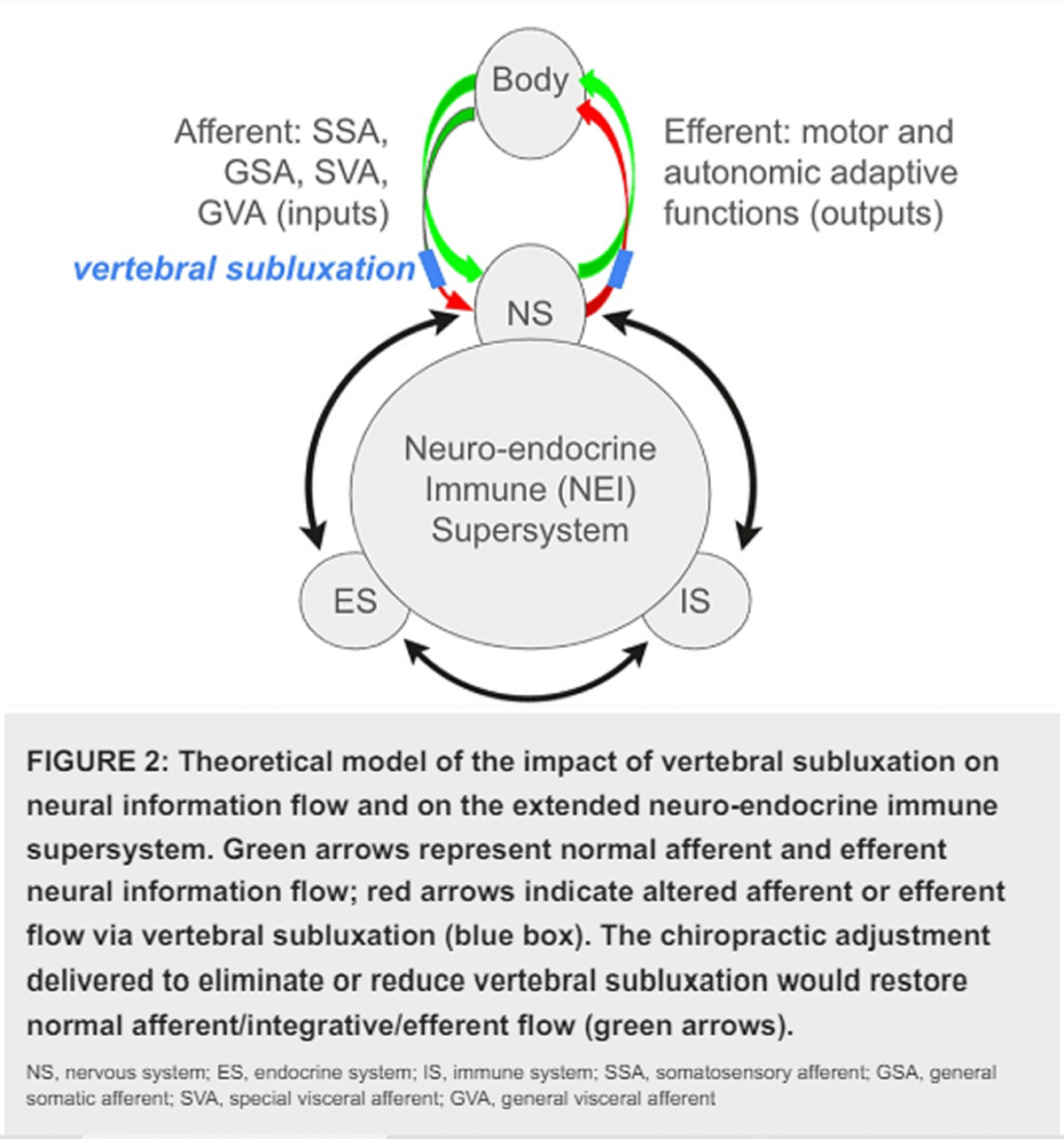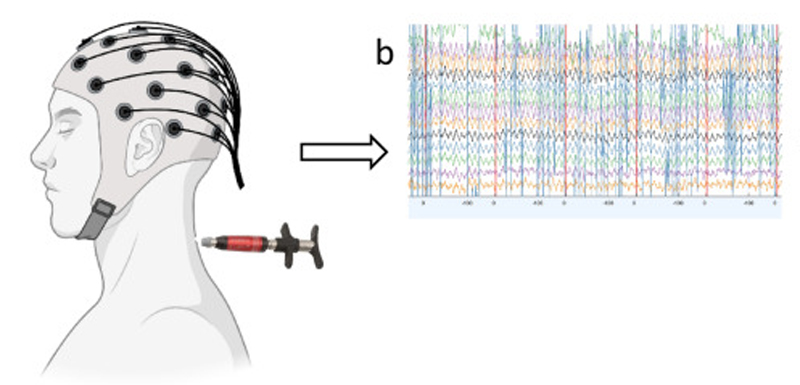Vertebral Subluxation and Systems Biology: An Integrative Review Exploring the Salutogenic Influence of Chiropractic Care on the Neuroendocrine-Immune System
SOURCE: Cureus 2024 (Mar 15); 16 (3): e56223
| OPEN ACCESS |
Amy Haas • Jonathan Chung • Christopher Kent • Brooke Mills and Matthew McCoy
Foundation for Vertebral Subluxation
4390 Bells Ferry Road
Kennesaw, Georgia 30144
In this paper we synthesize an expansive body of literature examining the multifaceted influence of chiropractic care on processes within and modulators of the neuroendocrine-immune (NEI) system, for the purpose of generating an inductive hypothesis regarding the potential impacts of chiropractic care on integrated physiology. Taking a broad, interdisciplinary, and integrative view of two decades of research-documented outcomes of chiropractic care, inclusive of reports ranging from systematic and meta-analysis and randomized and observational trials to case and cohort studies, this review encapsulates a rigorous analysis of research and suggests the appropriateness of a more integrative perspective on the impact of chiropractic care on systemic physiology. A novel perspective on the salutogenic, health-promoting effects of chiropractic adjustment is presented, focused on the improvement of physical indicators of well-being and adaptability such as blood pressure, heart rate variability, and sleep, potential benefits that may be facilitated through multiple neurologically mediated pathways. Our findings support the biological plausibility of complex benefits from chiropractic intervention that is not limited to simple neuromusculoskeletal outcomes and open new avenues for future research, specifically the exploration and mapping of the precise neural pathways and networks influenced by chiropractic adjustment.
There are more articles like this @
Keywords: adaptability; chiropractic adjustment; chiropractic care; evidence informed practice; integrative physiology; salutogenesis; vertebral subluxation.
From the FULL TEXT Article:
Introduction and background
A primary function of the human body is to adapt to its environment in order to survive and propagate the species. The process of adaptation requires a patent neurological capacity to
(1) rapidly and accurately sense threats to or changes in the body’s internal and external environments;
(2) integrate multiple forms of sensory0 information; and
(3) execute a coherent, physiologically coordinated and temporally appropriate multi-system response.
The human nervous system must, therefore, be capable of sensitively perceiving and accurately integrating all forms of information from its environment including physical changes, chemical changes, or emotional/social challenges, as it continually assesses and overcomes potential threats [1]. Further, it must also be capable of generating a coordinated response via a symphony of body systems, promoting coherent maintenance of adaptation within the body’s dynamic equilibrium and safeguarding the body’s ability to thrive under diverse circumstances [2, 3].
Integrative systems biology, or integrative physiology [4], is the study of coordinated responses from functionally coupled systems such as the nervous system, the endocrine system, and the immune system, which reciprocally influence one another [5–8]. The growth in the body of research outlining the connections between these subsystems has been exponential in the past century, and has overcome the now-historical notion that the central nervous system (CNS) is “immunologically pristine” and separated from the immune system [9, 10]. While the relationship between the nervous and endocrine systems has long been accepted [11], current research has elucidated and defined numerous physical and functional conduits by which the nervous system and immune system interact and achieve coherent synergy. These conduits include direct interface of the immune system with both the sympathetic and parasympathetic divisions of the autonomic nervous system [5, 12–14], direct innervation and control of immune structures, including neural circuits that directly modulate antigen flow through lymph nodes [5, 15, 16], bidirectional interactions at the dural neuro-immune interface within the CNS [10], and shared modulation by neurotransmitters, neuropeptides, hormones, and other small molecule messengers [17–19]. Current hypotheses in the field of neuroendocrine immunology hold that neuroimmune circuits may also mediate and modulate inter-organ communication, thereby serving as the primary conductor in the coordination of human physiology as a whole [20]. In the neuroendocrine-immune (NEI) system, each of the three component arms – nervous system, immune system, and endocrine system – modulates one another via multiple means of “crosstalk,” in order to achieve synergistic and integrated physiological changes and coordinated adaptation to an environmental stressor.
This growing body of research on the reciprocal nature of communication between the subsystems of the NEI supersystem underscores the importance of integrative physiology research [21]. Understanding the coordinated synergy between these systems is critical for an appreciation of how the human body functions as a whole: one must maintain an appreciation that an input that affects one subsystem would be naturally expected to impact or elicit a coordinated adaptive response from related subsystems. In the nascent exploration of integrative biology, considering and examining global, multi-system responses resulting from any impetus to each subsystem is not only appropriate, but it is also requisite.





Leave A Comment